For a thousand years or more, Jews have used special symbolic foods on Rosh Hashana to augur good outcomes for the new year ahead. Over time those foods have grown more numerous, taking on multiple diverse meanings. This led to a situation where there are many more omen-laden foods associated with Rosh Hashana (the Jewish New Year) than any other Jewish holiday. And that says a lot when we consider the numerous allegorical foods we consume on Pesach (matzah, maror/bitter herbs, charoset, four cups of wine), Chanukkah (latkes/potato pancakes, donuts) and Purim (hamentaschen, and other foods that mimic the wicked Haman’s body parts).
I have not posted much lately, because I was focused on a new Food Talk. And with a relatively short time to get it into shape, I was a bit pressed for time. Called “Not Just Apples and Honey: Rosh Hashana Foods and Their Many Meanings,” it was an exploration of this very topic, and I delivered it earlier this week to a synagogue group in New York. So I want to use this post to share one part of what I spoke about.
Two things that struck me about the symbolic foods of the holiday (known in Hebrew as simanim — signs or omens — and eaten formally in a Rosh Hashana “Seder”) were firstly how many different ones exist today, and also how different people appeared to use many different versions of the “same” signs. As I dug deeper, it became clear that much of this can be clarified by looking at just one of the symbolic foods: fenugreek.
It All Starts With Fenugreek
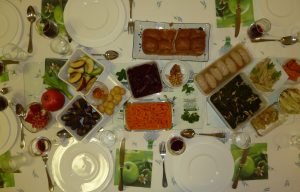
The clear basis on which the use of symbolic foods for Rosh Hashana sits is a passage found in two places in the Talmud. In it, amid a larger discussion of various ancient divination practices, the rabbi Abaye suggests one should eat 5 different foods at the start of the year. It is a short passage of just a single sentence, and somewhat cryptic, raising a number of questions. One rises from slightly different versions of the text — while one version says “eat,” another says “see” (and still other manuscripts suggest “bring forth,” thus my use of the word “use” as a catch-all in the first sentence of this paragraph). That being said, most people nowadays eat the foods, though it is interesting to note that the earliest mention of the Rosh Hashana Seder (from the 11th century by Rabbi Hai Gaon) indicated him pointing at the foods but not necessarily consuming them.
A more significant question, however, is what Abaye’s five foods actually are! He refers to them using their names in Aramaic (the language in which the Talmud was written), some of which were unclear to later readers of the text. For a few, it was merely a matter of identifying which food within a given plant family; the Aramaic karah is known to be in the squash family, but people will use foods as varied as pumpkin, winter squash, zucchini or bottle gourds/calabash.
The most confusing of the five, however, is called rubia in Aramaic. According to most authorities, rubia translates to fenugreek. Even with that, it is unclear whether one is to use the leaves (as pictured above) or the seeds, both of which are eaten regularly.
When Fenugreek Became Black-Eyed Peas, and More
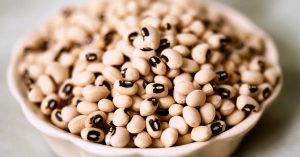
It is clear, however, that some recognized it as not 100% accurate. For the traditional Rosh Hashana Seder, wishes are invoked over each food, using a clever pun between the name of the food and an outcome we pray for. Rubia, for example, puns with some version of the Hebrew word yirbu — “increase,” referencing our good deeds. However, some versions of the prayer (the texts are almost as numerous as the foods themselves) add on another word that puns not with rubia but with lubia: u’tlabveinu (which I would translate as “and draw us close”).
Later, among Jews in eastern Europe, fenugreek was even less known, and black-eyed peas may have only been slightly more familiar. The 17th century Polish rabbi known as Magen Avraham (named for his major work) made an interesting alteration. Noting the traditional Seder, he suggested that one use any vegetable for rubia whose name (in any language) become a pun with “to increase.” Thus, in Europe, the most common vegetable to be associated with rubia was carrots. In Yiddish, the word for carrots is mehren, which also means increase. (More was mehr, so I like to say that mehren is like saying more-ify!)
To me, this indicates that the Magen Avraham was familiar with the wish recited over the rubia (“that our merits should increase”), but not the food that was used to signify it.
One final change took place about 200 years later. In his work on halacha known as the Kitzur Shulkhan Arukh (“Concise Code of Jewish Law”), Hungarian rabbi Shlomo Ganzfried mentions eating any vegetable that has a name in the vernacular of your country alludes to good things. He mentioned the carrot/mehren pun as just one example of this practice.
(Others use green beans for rubia because fresh black-eyed peas are sold in their edible pods — available right now, for example, in Machane Yehuda Market. Those who use sesame seeds may have seen in them an aspect of uncountable number due to their small size.)
So essentially what we see is that when a food is unidentified, but its purpose is, we find anything we can to fit the meaning.
This pushed the door even wider open, and nowadays people have grown accustomed to even creating their own Simanim for the holiday. What were originally mild puns have turned into the worst (or best, depending on your perspective) collection of culinary “Dad Jokes” ever. One of the most famous (I’ve seen it attributed first to Rabbi Heinemann of Baltimore) is to eat a leaf of lettuce, a half a raisin and a piece of celery, saying, “Let us have a raise in salary.”
I’ve seen at least ten playful ones created just for this year and our current crisis. I suggest putting a lettuce leaf on top of a piece of pickled herring, removing the leaf and saying, “Let us find a cure.” Alternatively, open a certain Mexican beer, make sure you finish it, and say, “May Corona come to an end.”
I joked that the title for the talk should have been “Rosh Hashana Symbolic Foods: Not Just Dad Jokes.”
Omens, Magic or Practicality?
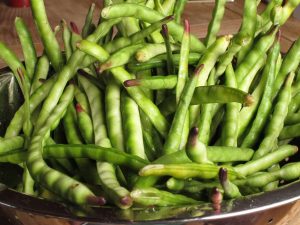
I believe the development this custom took is actually a rather beautiful aspect of Judaism. We try to find holiness in everything, and so even if we recognize that our practice is not exactly the “original” one, there is still value in it. We say to a degree that if we are able to find meaning in something, that meaning is real, even if it is “made up” by us on the spot. Maybe the original might be better, but that doesn’t minimize the value of the later alternatives. They are not considered “illegitimate.” Even the modern Dad Joke versions are valuable because they highlight our prayers and hopes for the year ahead. Who cares if the vehicle for those wishes is a terrible pun?
And in a way, I think that partially answers the last question as well. From the very origins of this custom, not everyone accepted the pseudo-magical aspects of it. Immediately preceding Abaye’s comments in the Talmud, there is another statement of the rabbis that indicates they considered the divination practices worthless, and perhaps even detrimental. Many later opinions discussing the symbolic foods custom specifically see it not as some sort of magic, but as a way of focusing our energies or putting us in the right frame of mind for the season.
Perhaps even Abaye saw his special omens as being naturally based, rather than just mystical charms. The cryptic word rubiya does not just provide a pun for “to increase” — according to many, increase is the very etymology of the word itself. From early times, fenugreek has been known to increase the flow of breast milk in nursing mothers, leading to the name that was itself based on that augmentation. Other commentators suggest that many of these auspicious foods grow quickly. So perhaps Abaye saw using these foods not as some kind of incantation, but more as a way that we could partner with God in helping bring about a good outcome for our future.
He almost certainly did not foresee his prescription spawning questionable humor and metamorphosed vegetables! But that’s all part of the beauty of a living Judaism.
Here’s wishing us all a year of happiness, health and blessings that increase… like a rubia.
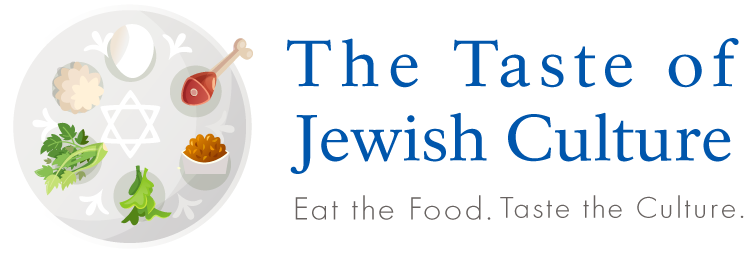
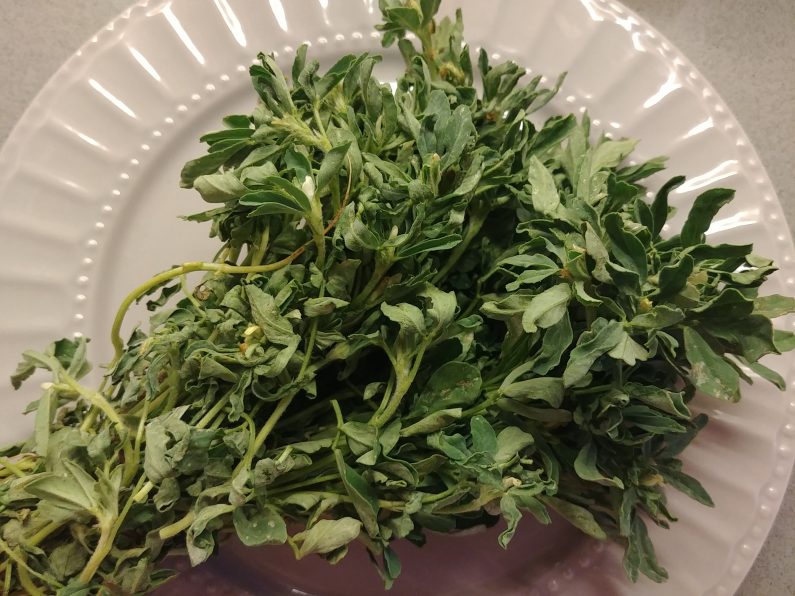

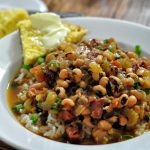

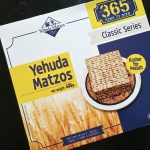

Borscht's Belt Wraps Ashkenazi Food and Broader Jewish Cuisine - The Taste of Jewish Culture
[…] That flavor is one of the key things I want to focus on in this post, along with how borscht also embodies some of the overall changes in Ashkenazi food over the past century and a half. But the first point fascinates me, as it shows how borscht is tied to Jewish foods far beyond those that locally surrounded its origin point. (Which also explains the bad pun in this post’s title; I may not be a dad, but I sometimes offer dad humor.) […]
More on Rosh Hashana's Symbolic Foods - The Taste of Jewish Culture
[…] last year’s post (which I suggest you read now, if you have not yet), I discussed the origins of the custom, the […]
Alternate Chanukkah Food Traditions and Their Surprising Sources - The Taste of Jewish Culture
[…] we know of on this holiday actually grew entirely out of folk practice. As with many of the customary symbolic foods of Rosh Hashana, Jews everywhere wanted to elevate the foods they ate by choosing ones that represented the meaning […]
Richie
A bit late for your post 3 years ago, but it’s nearly Rosh Hashonoh again.
Rashi translates רוביא as תלתין. The word תלתין comes from the Aramaic word תלת, which means 3, similar to the Hebrew word שלש. And if you can get hold of a bunch of fenugreek (called Methi in India and available in some shops here in Manchester, UK), as in the photo at the top of your post, you will see that every stalk has exactly 3 leaves.